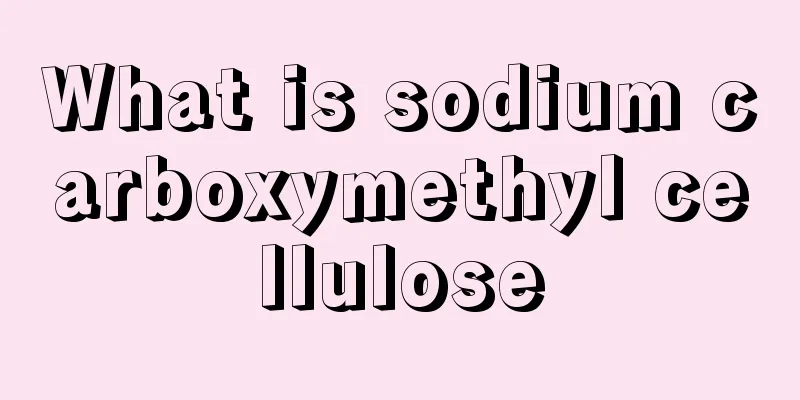What is sodium carboxymethyl cellulose

|
Sodium carboxymethyl cellulose is a type of cellulose that is widely used in the world. It is also a cellulose derivative of glucose polymer. It usually appears as white fibers or granular powder. It has the characteristics of no taste, no odor, good hygroscopicity, and is insoluble in organic solvents. It is generally used as a thickener in food and can also be used as a drug carrier in industry. Main Application It is used as a thickener in the food industry, as a drug carrier in the pharmaceutical industry, and as a binder and anti-reprecipitation agent in the daily chemical industry. Used as sizing agent and protective colloid of printing paste in printing and dyeing industry. In petrochemical industry, it can be used as a component of oil fracturing fluid. Contraindications Sodium carboxymethyl cellulose is incompatible with strong acid solutions, soluble iron salts, and some other metals such as aluminum, mercury and zinc. When the pH is less than 2 or when mixed with 95% ethanol, precipitation will occur. Sodium carboxymethyl cellulose can form co-agglomerates with gelatin and pectin, and can also form complexes with collagen, which can precipitate certain positively charged proteins. quality The main indicators for measuring CMC quality are degree of substitution (DS) and purity. Generally, different DS will result in different properties of CMC; as the degree of substitution increases, the solubility increases, and the transparency and stability of the solution also improve. It is reported that CMC has better transparency when the degree of substitution is 0.7-1.2, and the viscosity of its aqueous solution is maximum when the pH value is 6-9. In order to ensure its quality, in addition to selecting the etherifying agent, some factors that affect the degree of substitution and purity must also be considered, such as the dosage relationship between the alkali and the etherifying agent, the etherification time, the water content of the system, temperature, pH value, solution concentration and salts. CMC is usually an anionic polymer compound obtained by the reaction of natural cellulose with caustic soda and monochloroacetic acid, with a molecular weight of 6400 (±1 000). The main by-products are sodium chloride and sodium glycolate. CMC is a modified natural cellulose. The Food and Agriculture Organization of the United Nations (FAO) and the World Health Organization (WHO) have officially called it "modified cellulose" Characteristics This product is the sodium salt of cellulose carboxymethyl ether, an anionic cellulose ether, white or milky white fibrous powder or granules, density 0.5-0.7 g/cubic centimeter, almost odorless, tasteless, hygroscopic. It is easily dispersed in water to form a transparent colloidal solution, and is insoluble in organic solvents such as ethanol. |
<<: What are the causes of inability to bend finger joints?
>>: How to relieve stomach pain
Recommend
Causes of uterine cancer in women
Uterine cancer is a very common malignant tumor i...
Symptoms of impotence
Impotence is a disease that many men suffer from....
What are the clinical manifestations of alcoholic encephalopathy
Many people do not know much about alcoholic ence...
How far is it from cystic breast hyperplasia to breast cancer?
Cystic breast hyperplasia is a disease characteri...
How to take care of yourself after childbirth
Many women do not take good care of themselves af...
What to do if your skin is injured by cement
With the rapid economic development nowadays, bot...
What to do if gastroenteritis causes vomiting and diarrhea, treatment of gastroenteritis in children
Many people have experienced gastroenteritis, whi...
What items should be checked for hepatitis B?
Hepatitis B can be transmitted through body fluid...
Is fried yogurt high in calories?
As we all know, fried yogurt is a favorite snack ...
Is there a clear genetic tendency for melanoma?
Does melanoma have a clear genetic tendency? Surv...
Does drinking vinegar on an empty stomach hurt your stomach?
Vinegar is a very common condiment in cooking, an...
Is allergic rhinitis hereditary? What should I do if I have allergic rhinitis?
Allergic rhinitis is a disease with a very high i...
What foods are good for patients with gastric cancer? You can eat these
After gastric cancer surgery, you must eat soft f...
Excessive sweating on the back of the head after exercise
Life lies in movement. This is a perfect summary ...
How to treat the late stage of prostate cancer after endocrine therapy
After endocrine therapy for prostate cancer, subs...









